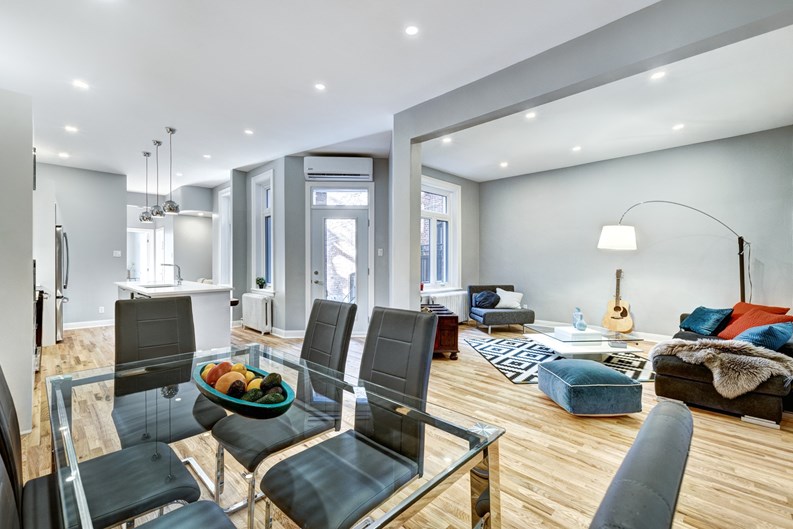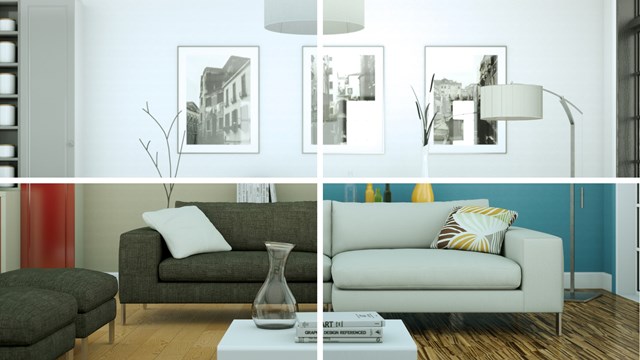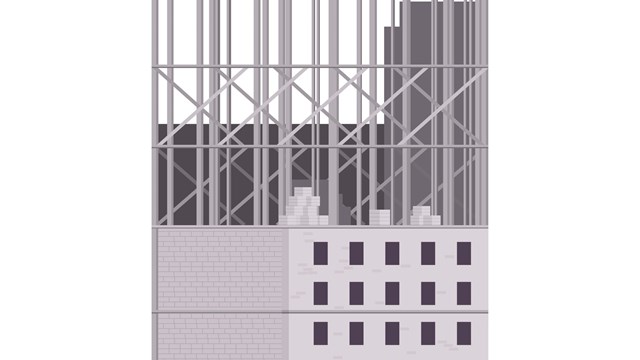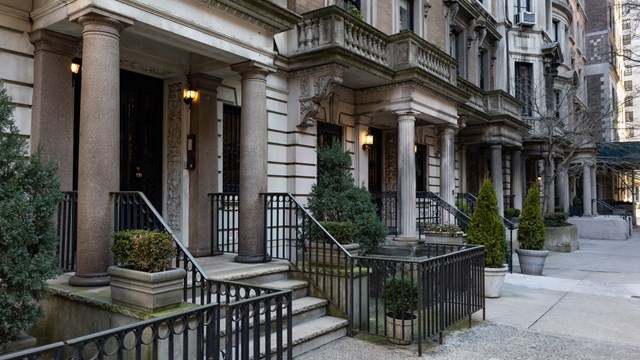What sells an apartment? Is it the feel of the space, the light, or the layout? Is it the price alone? Or something else entirely? Maybe a feeling of ‘hominess’ that calls out to the buyer: This is where you belong! Or perhaps it’s all three, or a combination of these and many more factors.
Across the board, brokers agree that there is a certain intangible reaction a buyer has when they find the right space; it just clicks. Their job is to make that ‘click’ happen as quickly as possible for as many buyers as possible, to thereby maximize the final sales price of the property. Many brokers swear by the practice of ‘staging’ an apartment—giving it a makeover to elicit that sense of home for prospective buyers.
What is Staging?
Most of us would have to admit that on a day-to-day basis, our homes don’t look like model apartments in new residential developments. We tend to be busy, and probably a little lazy, and most abodes have that ‘lived-in’ look. There’s a certain comfort to the old afghan blanket your granny knitted for you way-back-when that’s thrown over your couch, or the admittedly hideous lamp you took from your mother’s living room when your parents moved to Florida. The endless photos of you living the good life on vacation. Your tomato-red accent wall. They make a house a home—your home. But while a buyer may want your space, they don’t necessarily want your home. That’s what staging is about.
Elisha Lynch, a realtor with Lamacchia Realty located in Worcester, Massachusetts, stresses that “staging needs depend on the property. If you have a vacant high-end property, you automatically present it in a better light if you stage it. Visualization is difficult for many buyers, and staging provides a homey environment. It’s especially important in unique layouts. At a minimum, sellers should depersonalize, deep clean, and tidy up. There should be a minimal number of personal items around. When someone tours the unit, they need to envision their family there, not yours.”
“The aim of staging is to de-personalize the space,” says Amanda Wiss, the founder of Urban Clarity, a Brooklyn-based company specializing in space optimization and organization. “The prospective buyer should be able to imagine themselves living and thriving in the space. The owner should take out all their most personal items, like family photos, children’s artwork, trophies, and refrigerator magnets. You also don’t want to have a cluttered entryway with the family’s shoes, boots, coats, umbrellas, etc. We want to free up as many common areas as possible, and clear tabletops and surfaces. You should be able to see the floor in every closet. Also, bright fluorescent light bulbs kill the ambience and should always be replaced with golden warm light.”
“The more staging, the higher price you will get for the home,” says Max Stokes, co-founder of the Fox & Stokes Team with Compass in New Jersey. “Landscaping also plays a huge role, too—it’s the first impression of the home. Get rid of those shrubs that haven’t been taken care of in 20 years, and give it a refresh!”
Levels of Staging
A broker’s wish list for the easiest-sale-ever may well include a totally vacant, freshly renovated, just-painted apartment filled with tastefully nondescript rental furnishings, but the price tag for that convenience can be prohibitive for many sellers. After all, most of us need to live in our homes until we sell them. With that consideration in mind, are there ways to stage on a budget?
“There are instances where the bare bones of a property are problematic,” says Wiss. “Sometimes [one] can make a real difference with staging despite harsh limitations, but sometimes it’s best to just recommend a thorough cleaning out of the clutter, a fresh paint job, and the most simple and minimal furnishings and lighting changes.” That said, Wiss continues, “I can’t think of a time where absolutely nothing could be done. Even homes that go on the market as complete gut renovations can benefit from fresh paint, new lighting, decluttering, and depersonalization, as well as room-appropriate furnishings, plants, and artwork.”
Techniques
When it comes to aesthetics, staging almost always employs a neutral palette. Stagers take into consideration the bare bones of the space: the period in which it was built, location, the height of ceilings, windows, flooring, etc. To compensate for a hectic urban environment outside, for instance, they will bring in organic elements: budding branches, flowering plants, palms, ferns, to create a tranquil oasis. Even artificial plants help cultivate a soothing, desirable environment. Within the neutral palette recommended for most spaces, stagers will sometimes add color and texture as accents, and adjust light and shadow through the thoughtful choice and placement of décor, furniture, fabric, and art. Lighting is also extremely important. Lighting points at different heights and angles create warmth and can delineate different spaces within the home. Rugs and wall art are also often used to grab potential buyers’ attention, as well as making for more appealing images for online listings.
“Repainting,” Lynch adds, “is one of the cheapest returns on investment available and gives a nice, clean look. You don’t want to invest where you won’t see a return—so replacing an entire kitchen that’s not what the buyer wants may not be worth it. They will do that themselves. Price accordingly. We always discuss with sellers exactly what they should and need to do to stage properly.”
Added Value
“The value of staging is that homes will sell faster and for more money,” says Wiss. “In our experience, we’ve found that apartments we’ve staged typically sell quickly, and for over the asking price. It’s not unusual to have multiple bids on staged apartments because they tend to get more attention based on the images in the listing, plus word-of-mouth buzz.”
Some apartment sellers instinctively understand the value of staging. “The owners who are hesitant usually think it’s a superfluous expense,” says Wiss. “In that case, we explain that the longer the home is on the market, the greater the carrying costs. Prospective buyers don’t always understand how a completely empty space can ultimately be laid out, so staging really helps those buyers see what their life could be in the space. Also keep in mind that prospective buyers are looking at many places, so the ones that stick out in their mind at the end of the day, and require the least amount of imagination on their part, are the properties that are going to move faster.”
Going Virtual
Brokers and professional stagers have been working their magic for years, but newer to the scene, coinciding with the rise of online real estate listings, is what’s known as ‘virtual staging’—staging literally done through a computer model, rather than in the actual apartment itself. In addition to the expense of real-life staging, there are any number of reasons a seller might not be able to stage (or even vacate) an apartment for showings. A family with small children, for example, or a person with mobility limitations might not be a candidate for a full staging—but with an accurate floor plan and the miracle of computer art apps, their apartment can be transformed—at least for its online listing—without moving a single chair.
“Virtual staging is digitally changing the appearance of the unit,” says Nigel Pearce, a broker associated with Compass based in New York. “We use it when we have a seller who can’t or won’t restage or repaint, etc. We can change wall color, cabinets, furniture. We can make the space look any way we want. We can even declutter it from an original picture. We can also use virtual staging when an apartment is empty, to give potential buyers a visualization or idea of what the space can be transformed into. In a case where a unit requires a total gut job, we can make it look brand new. It’s economical. I had a client where I got a lot of views of the online listing, but no response for viewings. Once we did a virtual staging, we got a flood of viewers and it got sold.”
The View from the Trenches
Joanna Mayfield Marks, a broker with Brown Harris Stevens in the Brooklyn market, is a big believer in staging. She recommends it to all her listing clients as a way to improve their market position, especially in the current very tight market. “Staging absolutely helps the buyers envision how their furniture may fit into their new home,” she says. “This is paramount, particularly in New York City real estate, as the spaces are often very tight and sometimes ill-defined. Staging is also especially important now, when people are spending more time at home, and so are looking for areas for working and dining. We often use rugs, desks, and dining tables to define spaces that may not exist in one’s imagination or an open layout.”
“In the final analysis,” says Wiss, “the principles of staging remain the same in a hot ‘seller’s’ market environment as they do in a period that is more a ‘buyer’s’ market. There is no reason to change the winning recipe.”
According to Stokes, “Staging is critical to home sales. I stage every home I list. After all, if you’re selling a car, wouldn’t you get it detailed first? Staging is a similar sentiment. At the very least, we ensure the towels, linens, and paint are all new. There is so much more you can do, including small but impactful things like fresh seasonal flowers and a scented candle upon entry. They go a long way. It shows attention to detail—people want to imagine themselves in a well-cared-for home.”
“Remember,” says Lynch, “you don’t get a second chance at first impressions.”
A J Sidransky is a staff writer/reporter for CooperatorNews, and a published novelist. He may be reached at alan@yrinc.com.










Leave a Comment